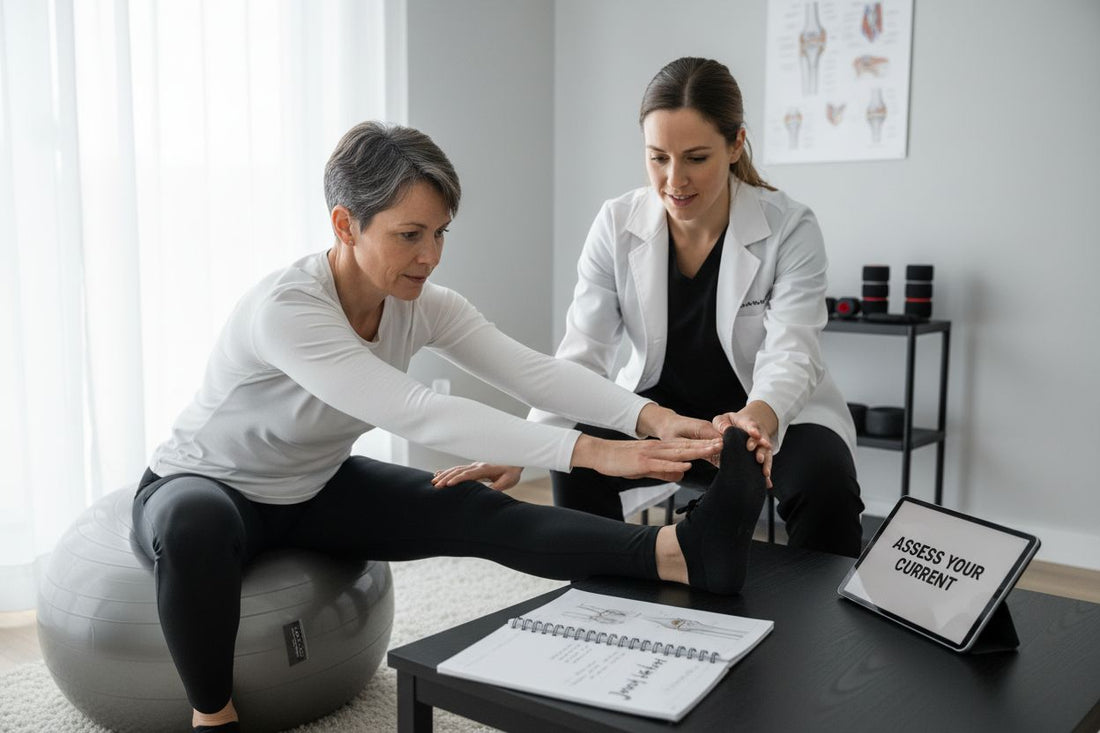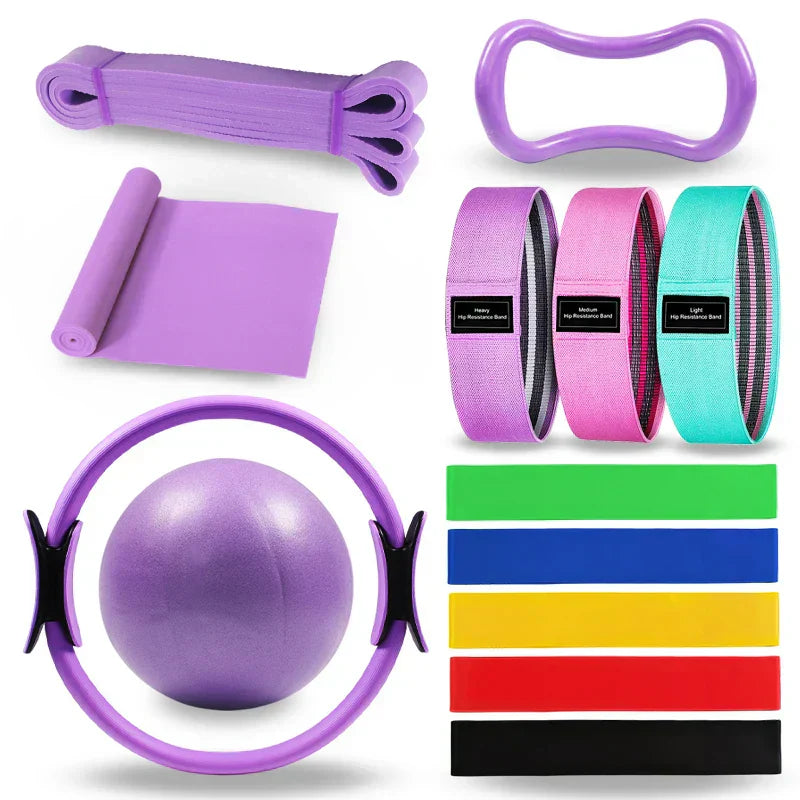Achy joints and limited mobility can make even the thought of exercise feel overwhelming. Yet more than 54 million adults in the US manage some form of joint-related condition every year, turning fitness into a daily challenge for many. Most people assume you just have to live with it or give up on staying active. The real surprise is how a few simple adjustments to your routine can transform joint pain into progress and make movement comfortable again.
Table of Contents
- Step 1: Assess Your Current Joint Health And Limitations
- Step 2: Choose Joint-Friendly Exercises For Your Fitness Level
- Step 3: Adjust Exercise Intensity And Duration Gradually
- Step 4: Incorporate Supportive Activewear And Tools
- Step 5: Monitor Your Progress And Adapt As Needed
Quick Summary
| Key Point | Explanation |
|---|---|
| 1. Assess Your Joint Health | Conduct a personal evaluation of joint capabilities to identify discomfort and limitations for safe exercise. |
| 2. Choose Low-Impact Exercises | Select exercises like swimming or stationary cycling that strengthen muscles while minimizing joint stress. |
| 3. Gradually Adjust Intensity | Progress exercise duration and intensity slowly to prevent overstressing your joints and injuries. |
| 4. Use Supportive Activewear | Invest in compression garments and proper footwear to reduce joint strain and enhance exercise comfort. |
| 5. Monitor Your Progress | Keep a detailed journal of workouts and symptoms to track improvements and adapt your routine as needed. |
Step 1: Assess Your Current Joint Health and Limitations
Before embarking on any exercise modification journey, understanding your current joint health becomes the critical foundation for safe and effective fitness. Comprehensive self-assessment helps prevent potential injuries and creates a personalized roadmap for maintaining joint mobility and strength.
Understanding Your Joint Baseline
Begin by conducting a thorough personal evaluation of your musculoskeletal condition. This isn’t just about identifying pain points but comprehensively understanding your body’s current capabilities and limitations. Pay close attention to existing discomfort, range of motion restrictions, and previous injury history.
Start with a systematic physical assessment that involves gentle movements and careful observation. Sit comfortably and perform slow, deliberate joint movements in multiple directions. Note any sensations of stiffness, sharp pain, or restricted motion. Document your findings in a dedicated health journal, recording specific details about which joints feel uncomfortable and under what circumstances.
Consulting a healthcare professional provides invaluable insights during this initial assessment. According to research from the Cochrane Database of Systematic Reviews, professional medical evaluation can accurately identify potential risks and recommend tailored exercise modifications.
Key Assessment Indicators
When evaluating your joint health, focus on several crucial indicators:
- Persistent pain duration and intensity
- Range of motion in major joints
- Swelling or inflammation
- Impact of existing conditions like arthritis
- Previous injuries or surgical interventions
By meticulously documenting these factors, you create a personalized baseline that guides your exercise modification strategy.
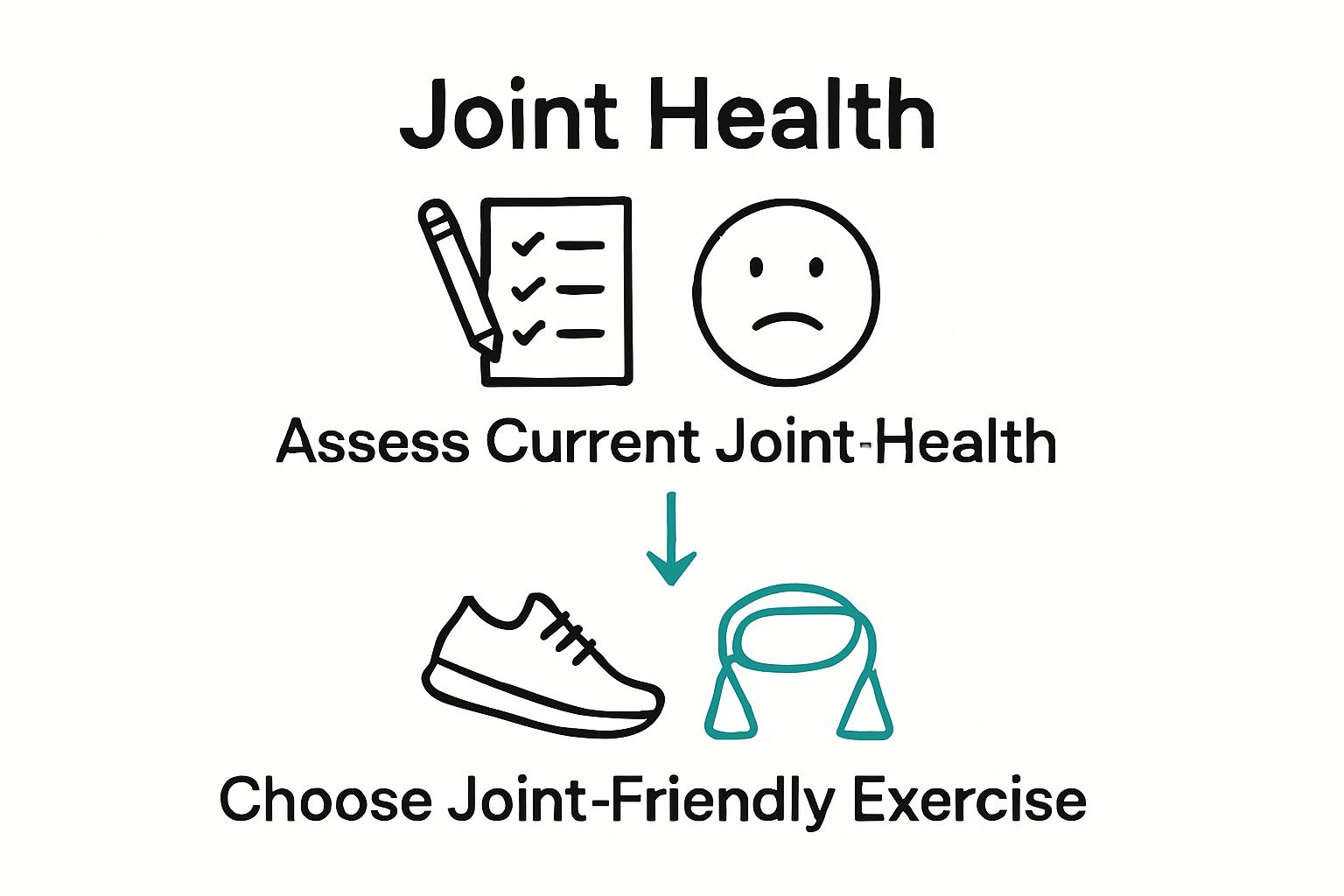 Remember, this assessment isn’t about limitation but empowerment. Understanding your body’s current state allows you to design an exercise program that supports healing, strengthens joints, and prevents future complications.
Remember, this assessment isn’t about limitation but empowerment. Understanding your body’s current state allows you to design an exercise program that supports healing, strengthens joints, and prevents future complications.
Successful completion of this step means having a clear, honest inventory of your joint health, ready to inform the next stages of your fitness journey.
Step 2: Choose Joint-Friendly Exercises for Your Fitness Level
Selecting appropriate exercises that match your joint health and fitness capabilities is crucial for safe, sustainable physical activity. This step transforms your assessment insights into a strategic workout plan that supports joint strength without causing additional stress or potential injury.
Your exercise selection should prioritize low-impact movements that build muscle support and improve flexibility while minimizing joint strain. Water-based exercises, walking, and controlled strength training emerge as excellent starting points for individuals managing joint limitations.
Designing Your Joint-Friendly Workout
When crafting your exercise approach, consider movements that distribute weight evenly and reduce direct joint pressure. Swimming and water aerobics offer exceptional opportunities for full-body conditioning with minimal joint stress. The water’s natural buoyancy supports your body weight, allowing muscle strengthening and cardiovascular benefits without harsh impacts.
Stationary cycling provides another excellent low-impact cardiovascular option. Choose machines with adjustable resistance and ergonomic designs that accommodate your specific joint range of motion. Recumbent bikes particularly benefit individuals with hip or knee joint concerns, offering back support and reduced joint loading during exercise.
According to the Rheumatology Organization, incorporating gentle resistance training can significantly improve joint function. Focus on controlled movements using resistance bands, light dumbbells, or body weight exercises. Prioritize proper form over weight or repetition volume.
Key considerations for exercise selection include:
- Individual joint mobility limitations
- Current pain levels
- Overall fitness baseline
- Existing medical conditions
- Personal comfort and motivation
Successful exercise modification means creating a personalized routine that challenges your body while respecting its current capabilities. Listen to your body, progress gradually, and celebrate small improvements in strength and mobility. Your workout plan should feel supportive, not punishing.
By thoughtfully selecting joint-friendly exercises aligned with your assessment findings, you transform potential physical limitations into opportunities for controlled, sustainable fitness progression.
Step 3: Adjust Exercise Intensity and Duration Gradually
Progressing in your fitness journey requires a strategic, patient approach that respects your body’s current capabilities while gently expanding its potential. Gradual intensity and duration adjustments prevent overwhelming your joints and create a sustainable path toward improved strength and mobility.
Understanding Progressive Overload for Joint Health
The key to successful exercise modification lies in incremental progression. Think of your fitness journey as a careful negotiation with your body, not a forceful conquest.
Start with shorter durations and lower intensities, allowing your muscles and joints to adapt and build resilience. For instance, if walking is your chosen exercise, begin with 10-minute sessions and increase by 2-3 minutes every week, paying close attention to how your body responds.
Utilize the “talk test” as a practical intensity gauge. During exercise, you should be able to maintain a conversation without significant breathlessness. This approach ensures you’re working at a challenging yet manageable level that doesn’t strain your joints beyond their current capacity.
Research from the American College of Sports Medicine emphasizes the importance of gradual load increases to prevent injury and promote consistent adaptation. Implement a structured progression that might look like adding one extra repetition, increasing resistance by small increments, or extending workout duration by mere minutes.
Key progression strategies include:
- Tracking workout metrics systematically
- Using perceived exertion as a primary indicator
- Allowing adequate recovery between sessions
- Monitoring joint response and discomfort levels
- Consulting healthcare professionals periodically
Pay special attention to recovery periods. Rest is not a sign of weakness but a critical component of strength building. Introduce rest days between workouts, particularly when you’re increasing intensity or trying new movements. These recovery windows allow your joints and muscles to repair and strengthen.
Successful progression means listening to your body’s signals. Mild muscle fatigue is normal, but sharp pain or persistent joint discomfort indicates the need to scale back. Your goal is consistent, sustainable improvement, not immediate extreme transformation. Each small, comfortable advancement builds confidence and physical resilience, creating a positive feedback loop of motivation and achievement.
Step 4: Incorporate Supportive Activewear and Tools
Selecting the right supportive gear transforms exercise modification from a challenging task to a comfortable, confidence-building experience. Proper equipment acts as a critical buffer between your joints and potential strain, providing stability, comfort, and enhanced performance during physical activity.
Activewear and supportive tools are not merely accessories but strategic investments in your joint health and fitness journey. Compression clothing, orthopedic braces, and specialized footwear can significantly reduce joint stress while promoting better movement mechanics.
Selecting Targeted Joint Support Gear
Compression garments emerge as a powerful ally in joint protection. These specially designed pieces apply gentle, consistent pressure around joints, improving blood circulation and reducing muscle vibration during movement. Look for graduated compression wear that offers targeted support without restricting natural movement. Knee sleeves, ankle supports, and compression shorts provide excellent joint stabilization for various exercise types.
Footwear selection becomes paramount in joint-friendly exercise modification. Seek shoes with robust arch support, adequate cushioning, and shock absorption capabilities. Running shoes, walking shoes, and cross-trainers designed for mature athletes often incorporate advanced technologies that minimize joint impact. Consider consulting with a specialized shoe fitting expert who can analyze your gait and recommend models tailored to your specific movement patterns.
According to the American Orthopedic Society for Sports Medicine, utilizing appropriate supportive tools can dramatically reduce injury risk and enhance overall exercise performance. Resistance bands, stability balls, and lightweight dumbbells with ergonomic grips offer low-impact strength training options that protect joints while building muscle.
Key considerations when selecting supportive gear include:
- Individual joint mobility limitations
- Specific exercise types
- Comfort and fit
- Material breathability
- Budget considerations
Remember that supportive gear is a personal journey. What works perfectly for one individual might not suit another. Experiment with different options, prioritize comfort, and don’t hesitate to invest in quality pieces that genuinely support your fitness goals.
Successful gear integration means feeling more confident and secure during exercise. Your supportive tools should make movement feel easier, not more complicated.
To help you select the best supportive gear for joint-friendly exercise, here is a comparison of common options, their main purposes, and key considerations mentioned in the article.
| Supportive Gear | Main Purpose | Key Consideration |
|---|---|---|
| Compression Garments | Enhance joint stability, improve circulation | Proper fit and targeted support |
| Knee Sleeves/Ankle Supports | Stabilize specific joints during movement | Comfort and freedom of movement |
| Supportive Footwear | Cushion impact, provide arch and shock support | Adequate cushioning and fit |
| Resistance Bands | Low-impact strength training, joint-friendly load | Ergonomic grip and low resistance |
| Stability Balls | Improve balance and strengthen supporting muscles | Size suitability and quality |
| Lightweight Dumbbells | Controlled strength training | Ergonomic grip, appropriate weight |
| Orthopedic Braces | Extra joint protection during exercise | Correct sizing and adjustability |
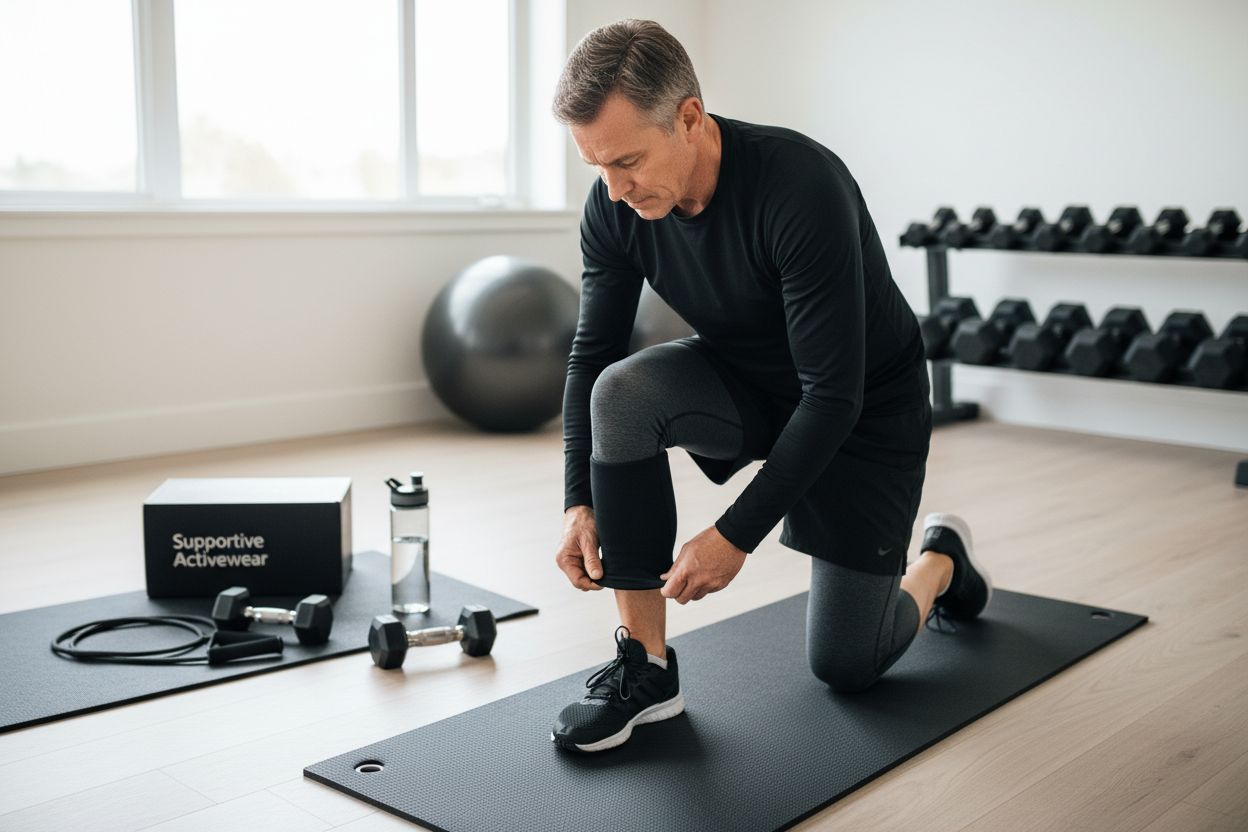 When you find the right combination of activewear and assistive devices, you’ll experience a newfound freedom in your fitness routine, with reduced joint discomfort and increased overall performance.
When you find the right combination of activewear and assistive devices, you’ll experience a newfound freedom in your fitness routine, with reduced joint discomfort and increased overall performance.
Step 5: Monitor Your Progress and Adapt as Needed
Tracking your fitness journey transforms exercise modification from a static plan into a dynamic, responsive strategy. Continuous monitoring allows you to celebrate victories, recognize challenges, and make informed adjustments that support your joint health goals. This step is about developing a keen awareness of your body’s signals and responses.
Creating a comprehensive tracking system involves more than just recording workout statistics. Develop a detailed journal that captures not just exercise metrics, but also your physical and emotional experiences. Note pain levels, energy, mobility improvements, and overall comfort during and after each workout session.
Building Your Progress Tracking Framework
Technology offers powerful tools for monitoring fitness progression. Smartphone apps and wearable fitness trackers can record workout duration, intensity, and even provide insights into movement quality. However, technology should complement, not replace, your personal body awareness. Pay attention to subtle changes in joint mobility, muscle strength, and overall comfort during activities.
Establish a consistent evaluation schedule, such as monthly assessments that review your exercise modification journey. Look beyond numerical metrics and consider qualitative improvements like increased daily functionality, reduced pain, and enhanced confidence in movement. These holistic indicators often matter more than raw exercise statistics.
According to the Rheumatology Organization, regular professional consultations can provide critical insights into your progress and potential modifications needed for ongoing joint health.
Key tracking elements to document include:
- Pain intensity and frequency
- Range of motion improvements
- Exercise tolerance
- Energy levels
- Psychological well-being
Be prepared to modify your approach based on your observations. If certain exercises consistently cause discomfort or you’re not seeing desired improvements, it’s time to reassess. Flexibility in your fitness strategy is not a setback but a sophisticated approach to long-term joint health.
Successful progress monitoring means developing an intuitive understanding of your body’s unique responses. You’ll become your own best advocate, learning to distinguish between productive challenge and potentially harmful strain. This self-awareness transforms exercise from a rigid routine into a personalized, adaptive journey of physical empowerment.
Here is a handy checklist table to help you track and document the core elements of monitoring your exercise progress, as described in the article.
| Tracking Element | What to Record | Frequency |
|---|---|---|
| Pain Intensity/Frequency | Daily joint discomfort, before/after exercise | Each workout/session |
| Range of Motion | Improvements or setbacks in movement | Weekly/Monthly |
| Exercise Tolerance | Duration and intensity managed comfortably | Each workout |
| Energy Levels | Overall fatigue or increased energy | Each workout |
| Psychological Well-being | Confidence, motivation, or anxiety about exercise | Weekly |
| Overall Functionality | Changes in daily movement or activity capability | Monthly |
Ready to Safeguard Your Joints and Transform Your Fitness Routine?
If you have been evaluating your joint health, seeking low-impact workouts, or struggling to find supportive activewear that truly makes movement easier, you are not alone. The journey towards safer, more effective exercise can feel overwhelming, especially when pain, limited mobility, or past injuries slow you down. That is why Real Healthy Haven is here to help. We specialize in products designed especially for adults over 40 who want to protect their joints while staying active and comfortable. Discover joint-friendly activewear, therapeutic aids, and easy-to-use fitness tools that match all the best practices from our latest guide on exercise modification.
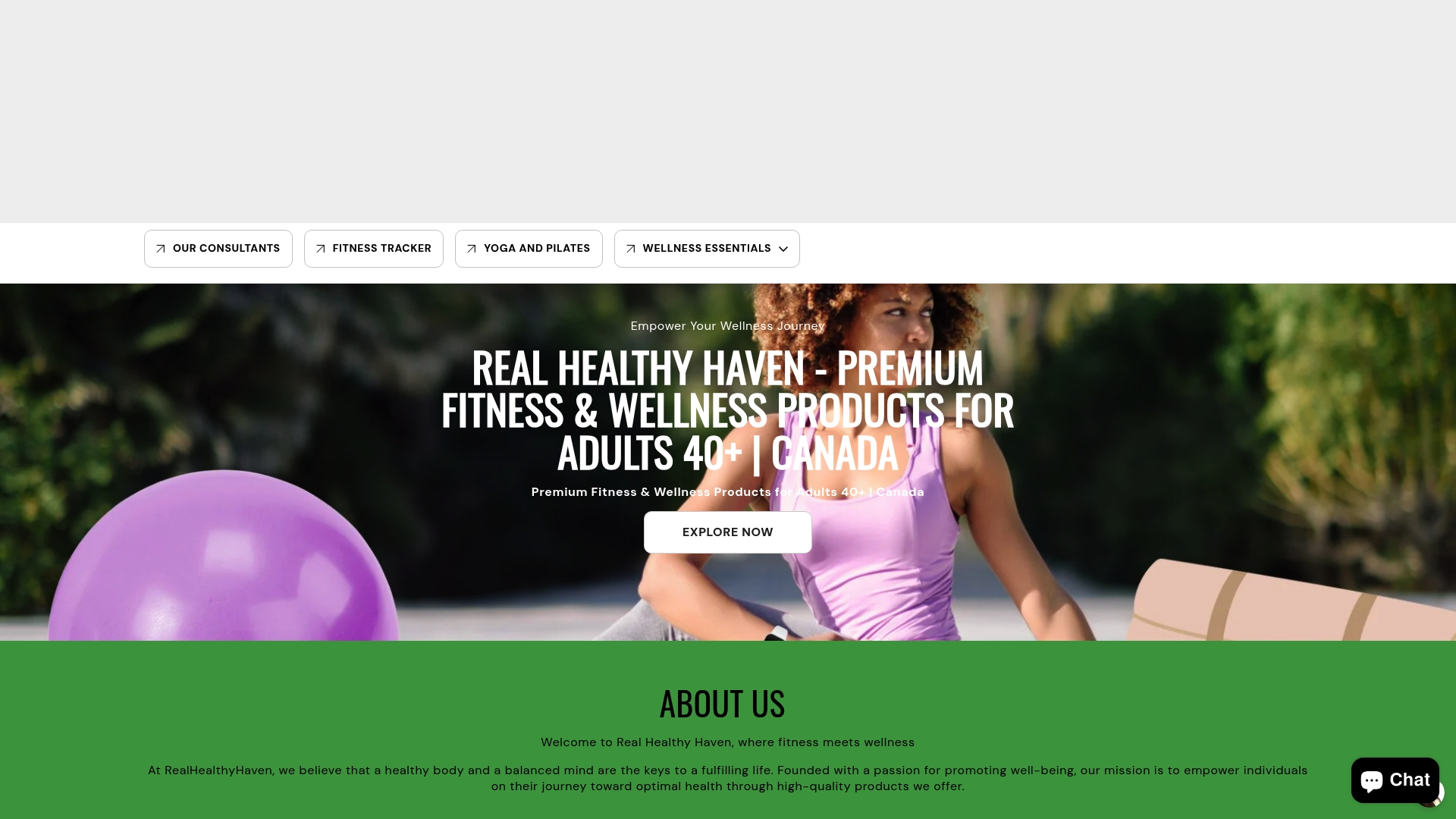
Take the next step toward a healthier, more confident you. Visit Real Healthy Haven now and explore a curated selection made for your needs. Make use of our ongoing deals and benefit from expert-selected gear that supports safe progression. Do not wait to prioritize your joint health. Shop today and feel the difference at Real Healthy Haven.
Frequently Asked Questions
What are joint-friendly exercises I can do to stay active?
Low-impact exercises such as swimming, water aerobics, stationary cycling, and controlled strength training using resistance bands or light weights are great options that minimize joint strain while enhancing muscle strength.
How can I safely progress my exercise intensity and duration?
Start with shorter workouts and gradually increase the intensity and duration. A good rule of thumb is to add 2-3 minutes to your sessions each week, paying attention to your body’s response. Using the “talk test” can also help gauge exercise intensity by ensuring you can maintain a conversation.
What type of supportive activewear is recommended for joint health?
Look for compression garments designed to provide gentle support around joints, such as knee sleeves or ankle supports. Additionally, choose footwear with excellent arch support and cushioning to help reduce joint impact during exercises.
How can I monitor my progress and know when to adapt my exercise routine?
Maintain a detailed fitness journal that tracks not only workout metrics like duration and intensity but also your pain levels, mobility improvements, and overall comfort. Regular evaluations, such as monthly assessments, can help you recognize when it’s necessary to modify your approach to maintain joint health.

